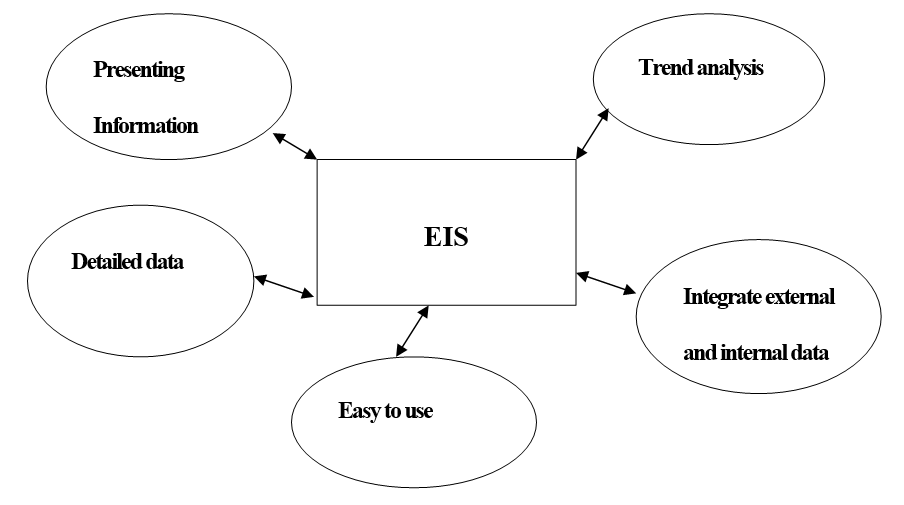Home »
Management Information System
Executive Information System (EIS) | Management Information System
MIS | Executive Information System (EIS): In this tutorial, we will learn about the Executive Information System (EIS), its characteristics, advantages, and disadvantages in Management Information System (MIS).
By IncludeHelp Last updated : June 01, 2023
What is an Executive Information System (EIS)?
An Executive Information System (EIS) is a kind of decision support system (DSS) used in organizations to help executives in decision making. It does so by providing easy access to important data needed in an organization to achieve strategic goals. An EIS usually has graphical displays on a user-friendly interface.
Executive information systems can be used for monitoring company performance in many different types of organizations as well as for identifying opportunities and problems.
Early executive information systems were developed on mainframe computers as computer-based programs to provide the description, sales performance and/or market research data for senior executives of a company. Executives, however, were not all literate or confident about the computers. Also, EIS data endorsed only executive-level decisions that did not necessarily support the entire company or enterprise.
Current EIS data is available on local area networks (LANs) throughout the company or enterprise, facilitated by personal computers and workstations. Employees can access company data to help make decisions in their workplaces, departments, divisions, etc. This enables employees to provide relevant information and ideas above and below the level of their company.
Executive support systems are intended to be used directly by senior managers to support unscheduled strategic management decisions. Often such information is external, unstructured and even uncertain. Often, the exact scope and context of such information are not known in advance.
This information is based on data,
- Business intelligence
- Financial intelligence
- Data with technology support to analyze
Executive Information System (EIS) Characteristics
The below mentioned figure describes about key characterisitics of EIS,

- Detailed data – EIS provides absolute data from its existing database.
- Integrate external and internal data – EIS integrates integrate external and internal data. The external data collected from various sources.
- Presenting information – EIS represents available data in graphical form which helps to analyze it easily.
- Trend analysis – EIS helps executives of the organizations to data prediction based on trend data.
- Easy to use – It is a very simplest system to use.
Executive Information System (EIS) Advantages
- Trend Analysis
- Improvement of corporate performance in the marketplace
- Development of managerial leadership skills
- Improves decision-making
- Simple to use by senior executives
- Better reporting method
- Improved office efficiency
Executive Information System (EIS) Disadvantage
- Due to technical functions, not to easy to use by everyone
- Executives may encounter overload of information
- Difficult to manage database due to the large size of data
- Excessive costs for small business organizations
Advertisement
Advertisement